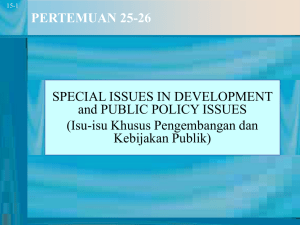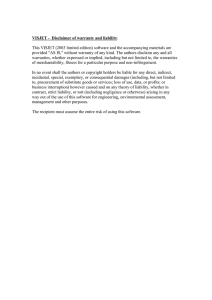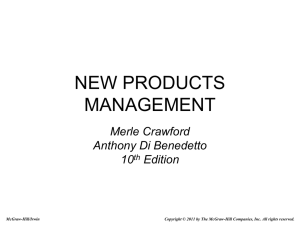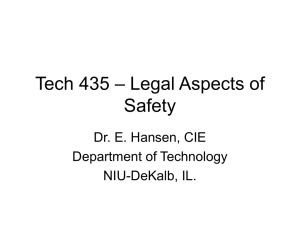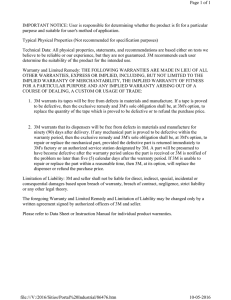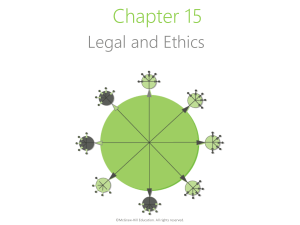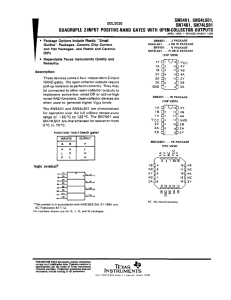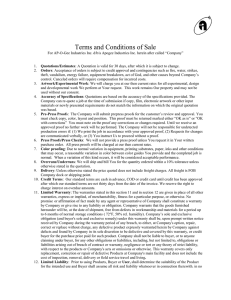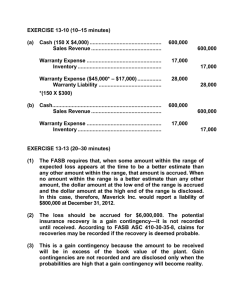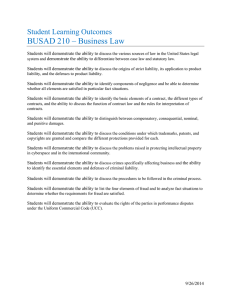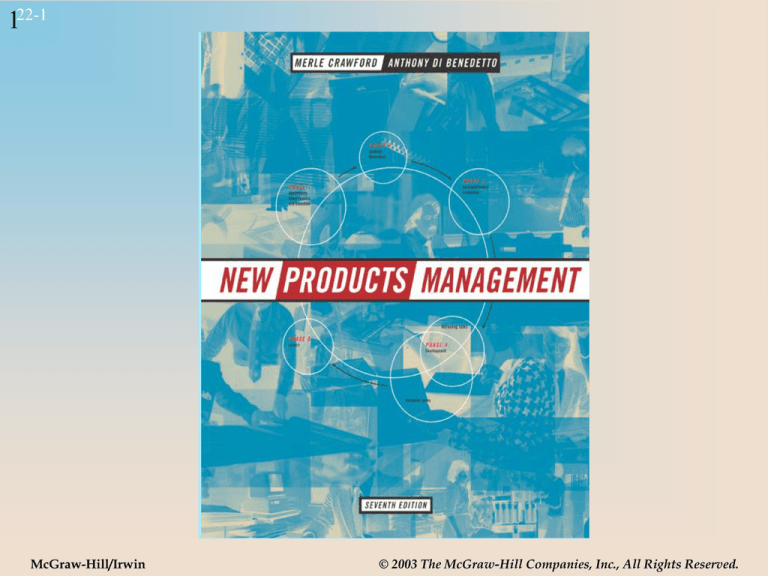
122-1
McGraw-Hill/Irwin
© 2003 The McGraw-Hill Companies, Inc., All Rights Reserved.
222-2
CHAPTER TWENTY-TWO
PUBLIC POLICY ISSUES
322-3
Life Cycle of a Public Concern
• Stirring
• Trial Support
• Political Arena
• Regulatory Adjustment
Figure 22.1
422-4
Product Liability:
Typology of Injury Sources
• Inherent Risk in Product
• Design Defects
–
–
–
Dangerous Condition
No Safety Device
Inadequate Materials
• Defects in Manufacture
• Inadequate Instructions or Warnings
• Dangers After Use
522-5
Four Legal Bases for Product Liability
• Negligence
– Manufacturer let the product be injurious
• Warranty
– A promise
– Express warranty: a statement of fact about a product
– Implied warranty: arises when product is made available for a given use
622-6
Four Legal Bases for Product Liability
(continued)
• Strict Liability
– Seller is responsible for not putting a defective product on the market
– Defenses: assumption of risk; unforeseeable misuse; not defective
• Misrepresentation
– Implied use of product, even if not defective
Other Legislation
Consumer Product Safety Act/Safety Commission
722-7
Which Are the Real Product Warning
Labels?
Figure 22.4
1. On a disposable razor: “Do not use this product during an earthquake.”
2. On a rock garden: “Eating rocks may lead to broken teeth.”
3. On a roll of Life Savers: “Not for use as a flotation device.”
4. On a hair dryer: “Do not use while sleeping.”
5. On a piano: “Harmful or fatal if swallowed.”
6. On a cardboard windshield sun shade: “Warning: Do not drive with sun shield in
place.”
7. On shin guards: “Shin guards cannot protect any part of the body they do not cover.”
8. On syrup of ipecac: “Caution: may induce vomiting.”
9. On an iron: “Do not iron clothes while being worn.”
10. On a plastic sled: “Not to be eaten or burned.”
11. On work gloves: “For best results, do not leave at crime scene.”
12. On a jet ski: “Riders may suffer injury due to forceful entry of water into body
cavities while falling off this craft.”
13. On a carpenter’s router: “This product not intended for use as a dentist’s drill.”
14. On a blender: “Not for use as an aquarium.”
15. On a stroller: "Always remove child from stroller before folding."
822-8
Other Areas of Public Policy Debate
•
•
•
•
•
Environmental Needs
Worthy Products
Morality
Monopoly
Personal Ethics (what would you do?)
922-9
Environmental Needs
• A new product is said to hurt the environment
if:
– Its raw materials are scarce or hard to get to.
– Its design or manufacture causes pollution or
excess power usage.
– Its use causes pollution.
– Its disposal cannot be handled by recycling.
• Some companies test market their products in
Germany and Scandinavia, because of the strict
greenness tests there.
22-10
10
Public Policy Problems and the New
Products Process
Figure 22.6
22-11
11
Worthy Products
• Coffee manufacturers agreed to produce some
brands containing no beans from El Salvador.
• Manufacturers have been asked to produce
special exercise equipment for the handicapped
or modified products for the elderly.
• Orphan drugs supported by the federal
government; otherwise would not be
commercially feasible due to few users.
22-12
12
What Can the New Product Manager Do?
• Include in Strategy and Policy
– Consider public policy implications in PIC
• Control Systems
• Product Testing
• Marketing Prepares Warnings/Labels
• Adequate Market Testing (to identify miscommunications)
• Education (to company personnel and customers)
• External Affairs

